LBJ NHP and the Hill Country
We took a drive to the Hill Country to see the Lyndon B. Johnson National Historical Park, a little over an hour west of Austin. After getting past some seemingly endless construction, we enjoyed the drive and the blooming wildflowers on both sides of the road.
At the Visitor Center in Johnson City, we learned more about Lyndon Baines Johnson, “the last of the frontier presidents.” His upbringing in the Texas Hill Country and his enduring love for the land were evident in his presidency, during which he spent nearly 500 days (one fourth of his time in office) at his ranch. Interesting - was LBJ a pioneer in “working from home”?
We attended a ranger talk and tour of his boyhood home, where he lived with his parents and four siblings. The house was spacious, but there was no electricity and no running water. We tried to imagine what life was like for the family, especially his college-educated mother, whose elegant parlor was so different from the rest of the house. LBJ’s first achievement as a U.S. Congressman was to bring electricity to the Texas Hill Country.
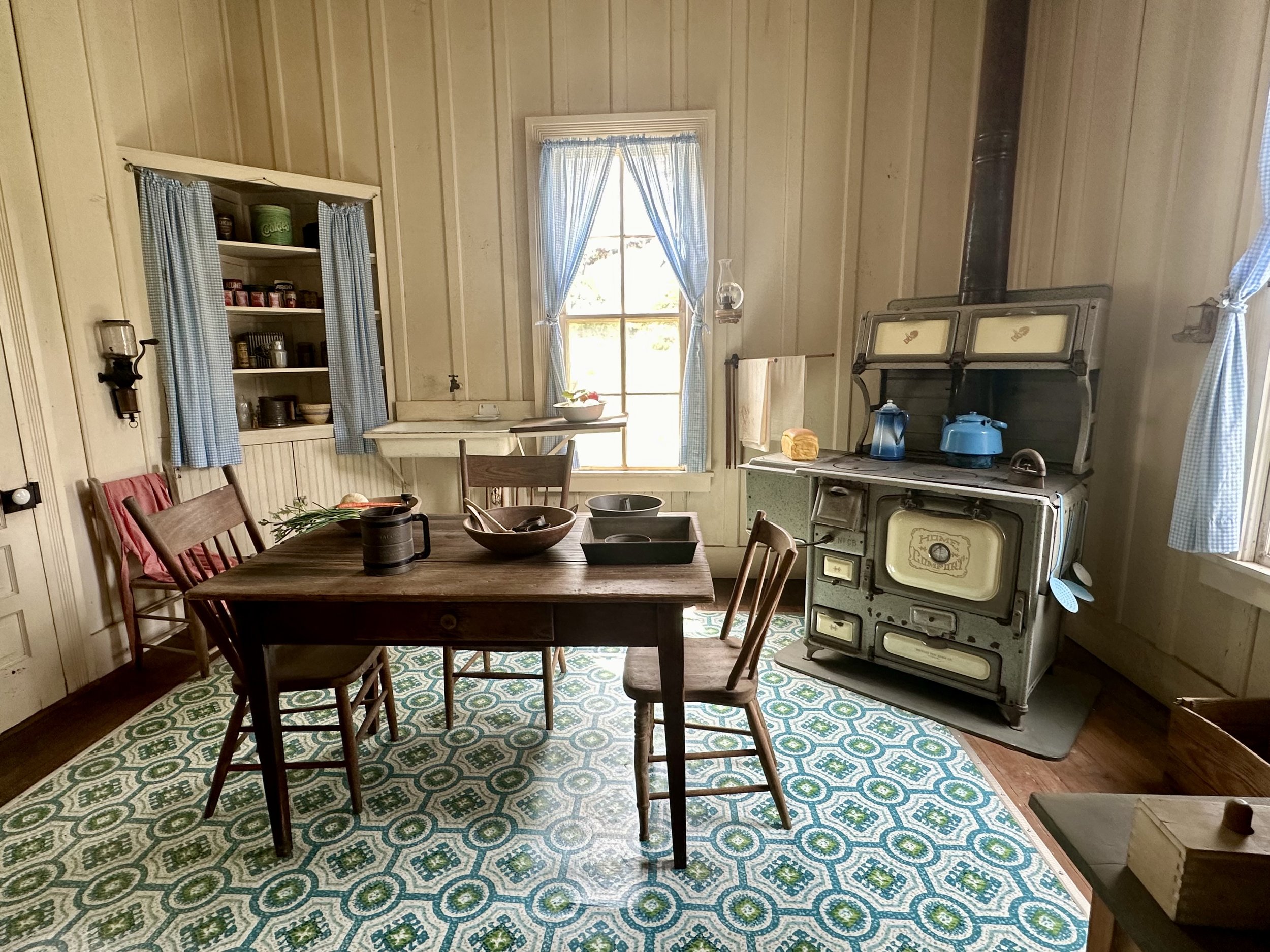
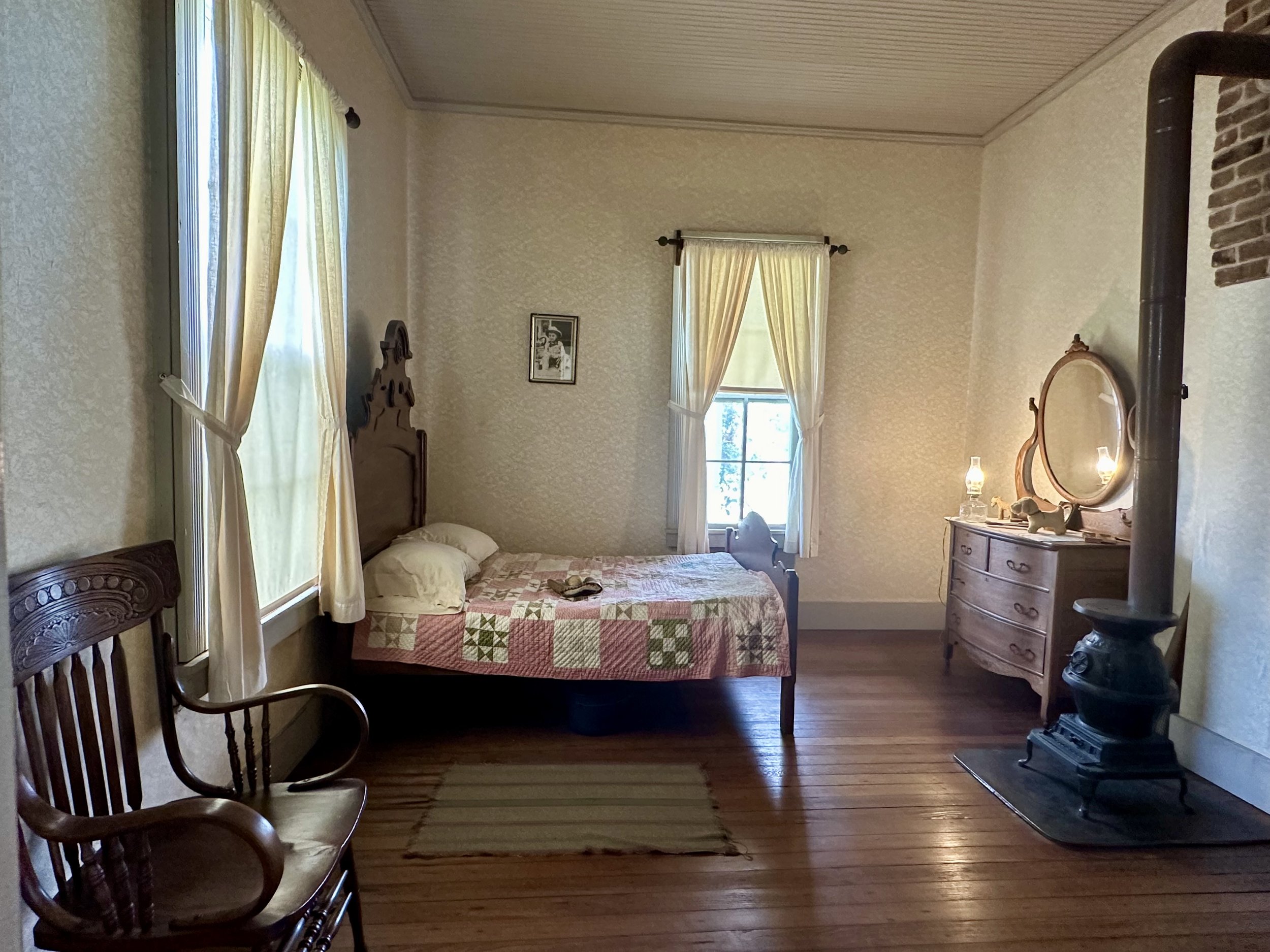
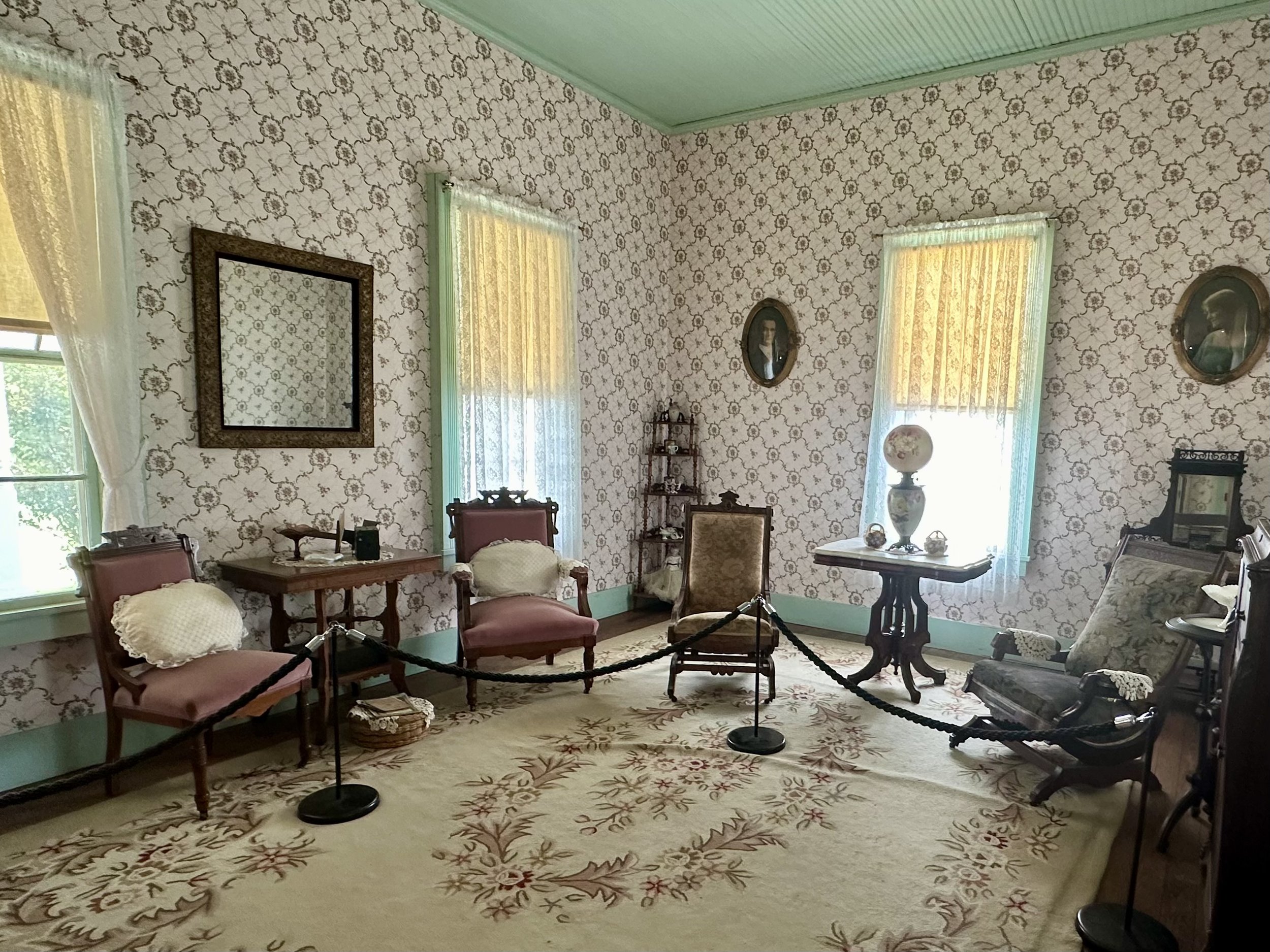
At the Johnson Settlement, we walked a loop trail and saw the original log cabin where LBJ’s grandfather lived and ran a cattle droving business in the 1860s. There were also barns, a windmill, and some expansive oak trees that were probably quite small in those days. The longhorns were nowhere in sight, but the bluebonnets were abundant!
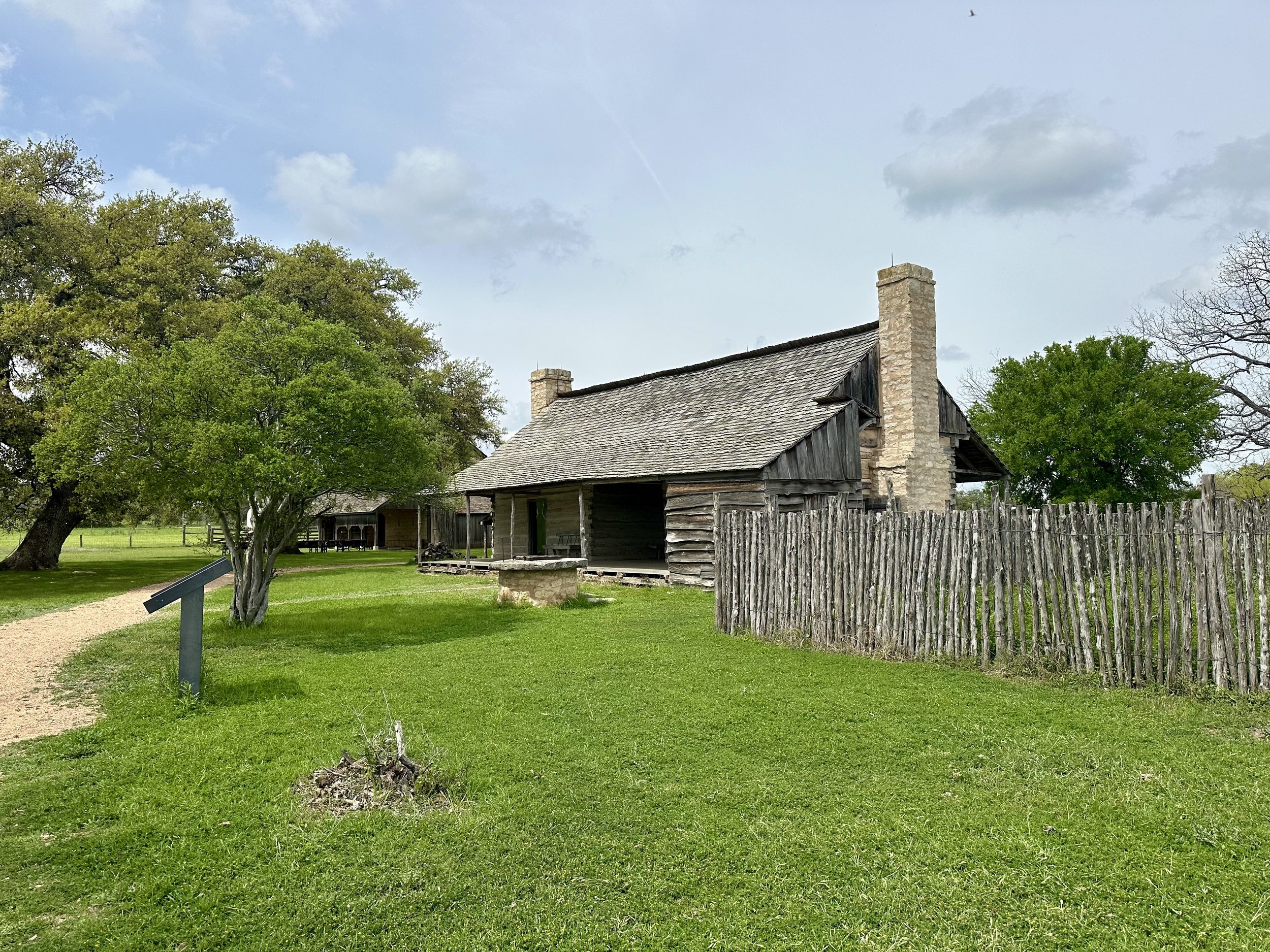
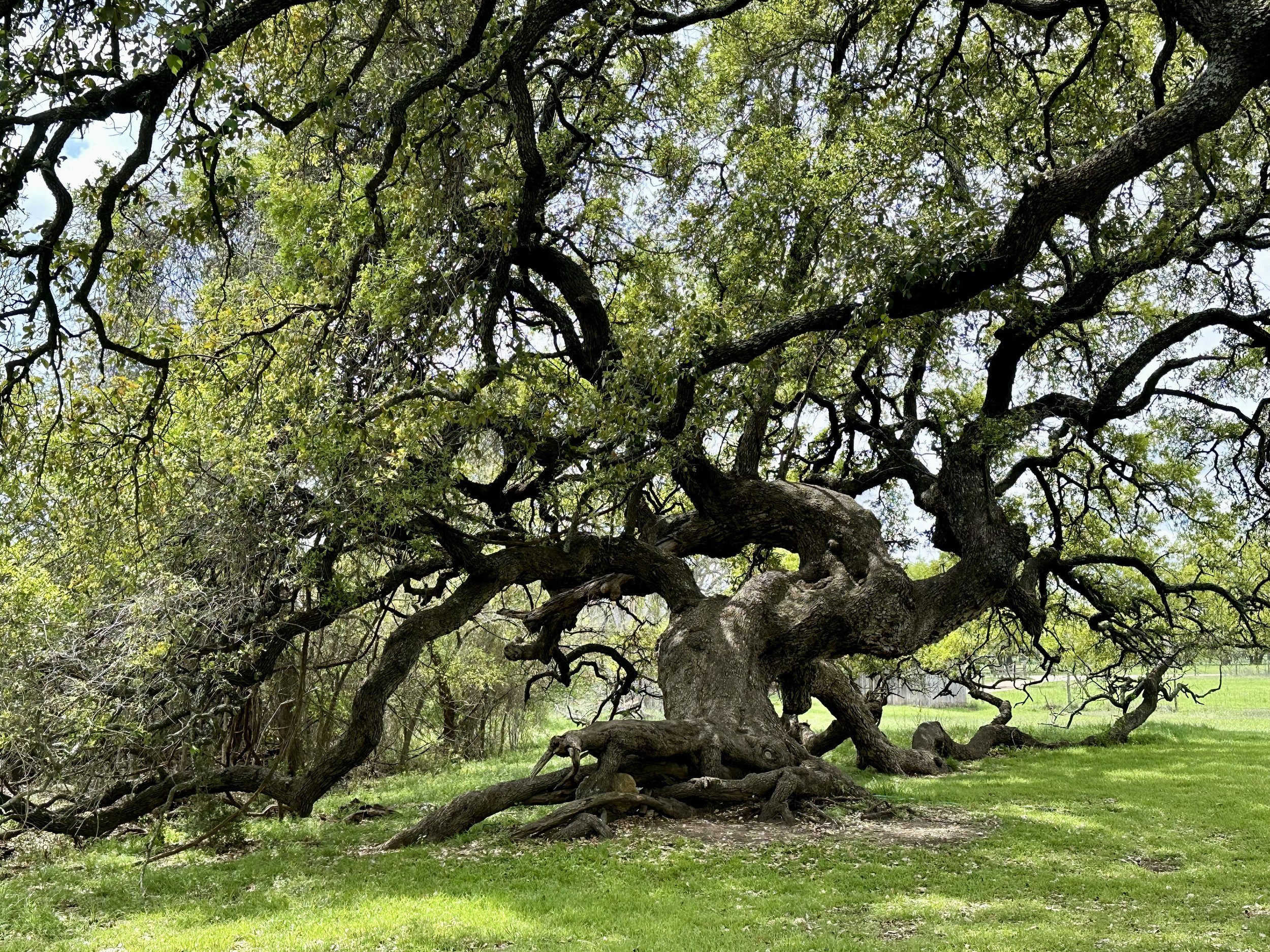
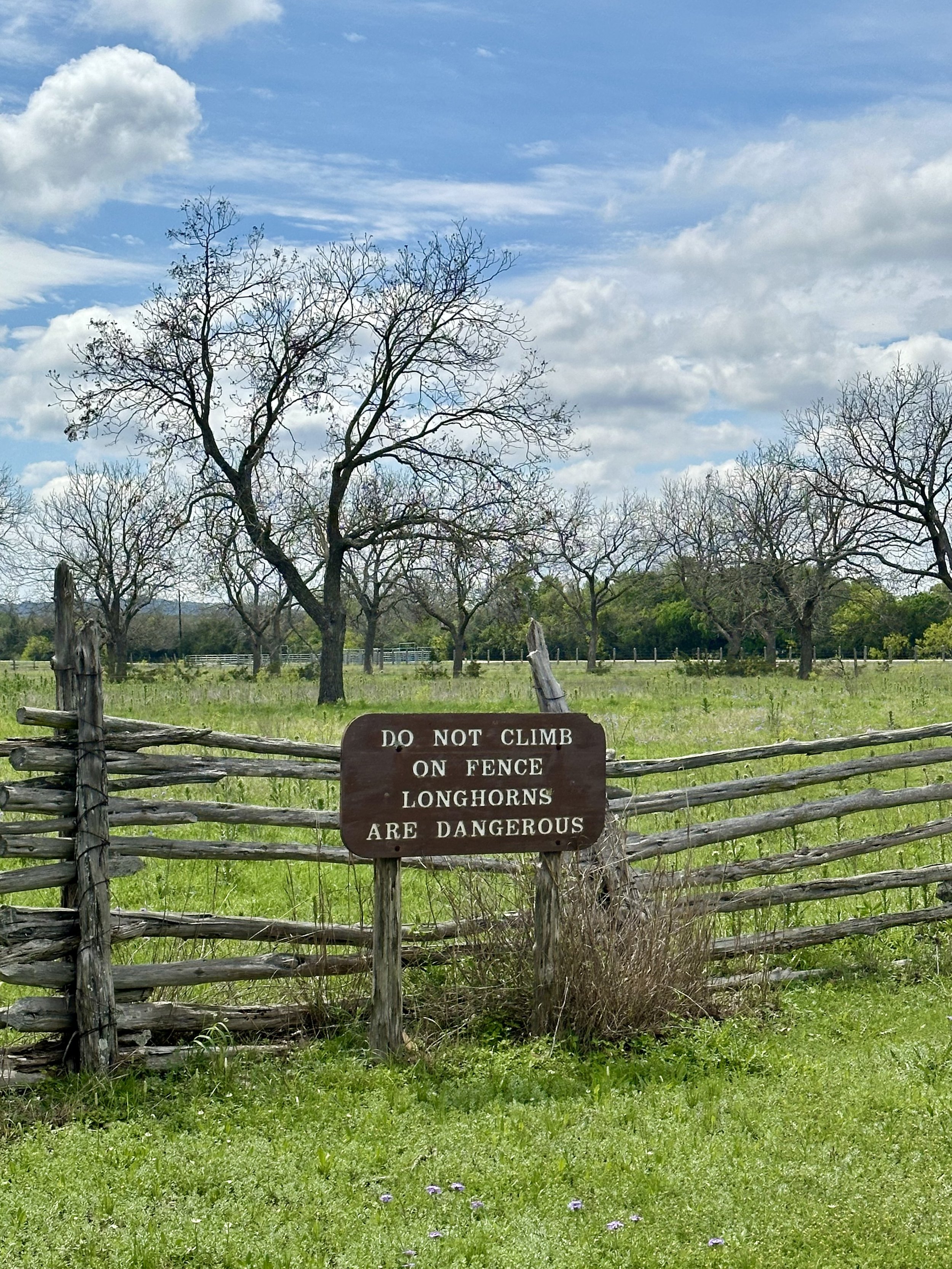
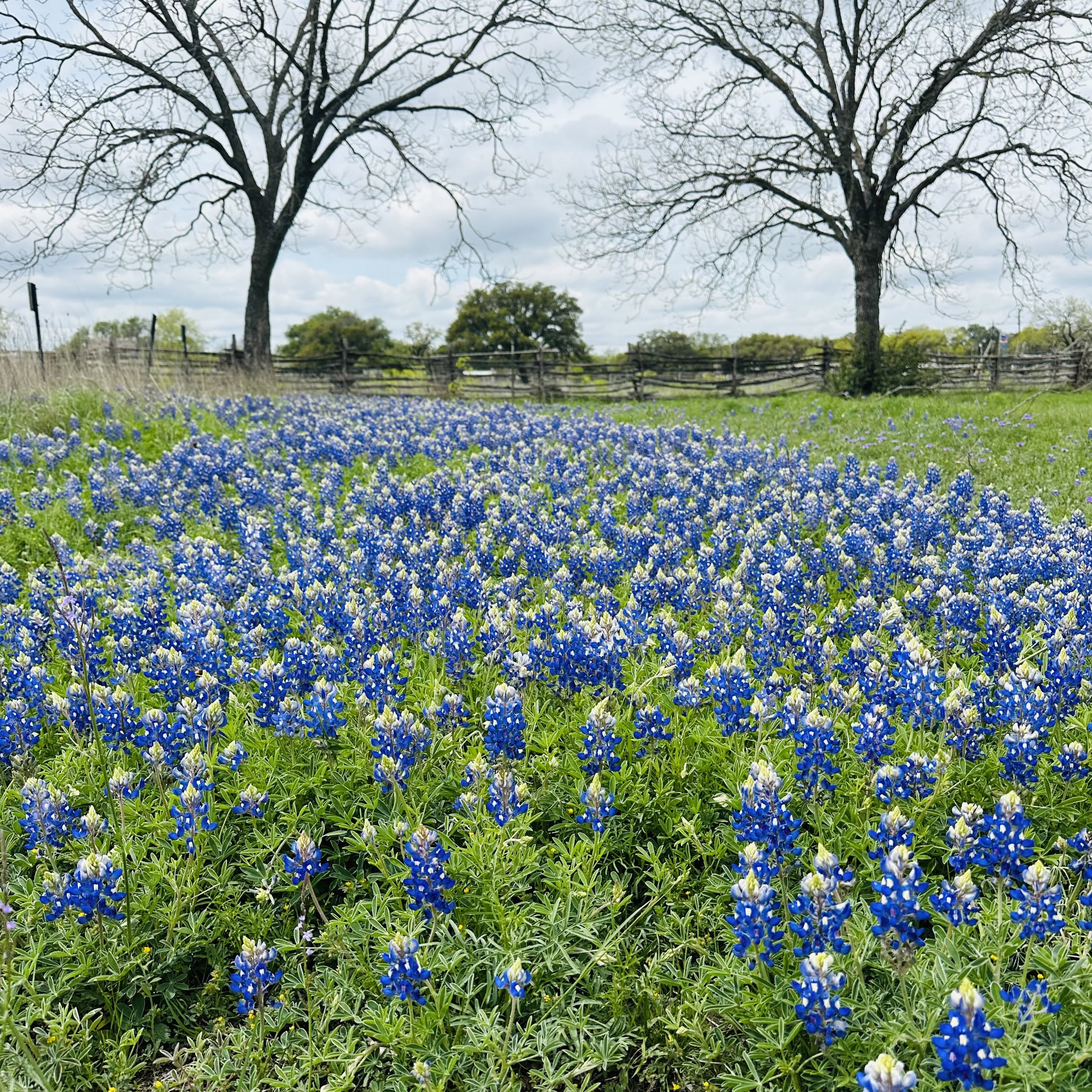
The second portion of the national historical park, LBJ Ranch, was 14 miles from Johnson City. On the drive over, we turned too soon and found ourselves at William Chris Vineyards. We impulsively decided to stop and check it out. We didn’t have reservations for a tasting, but they welcomed us with a glass of wine and invited us to tour the grounds. The winery was charming, with butterfly and herb gardens, and plenty of outdoor seating overlooking the vineyards. We sat for a short while enjoying the wine, the view, and the live music. Wrong turns can lead to nice surprises!
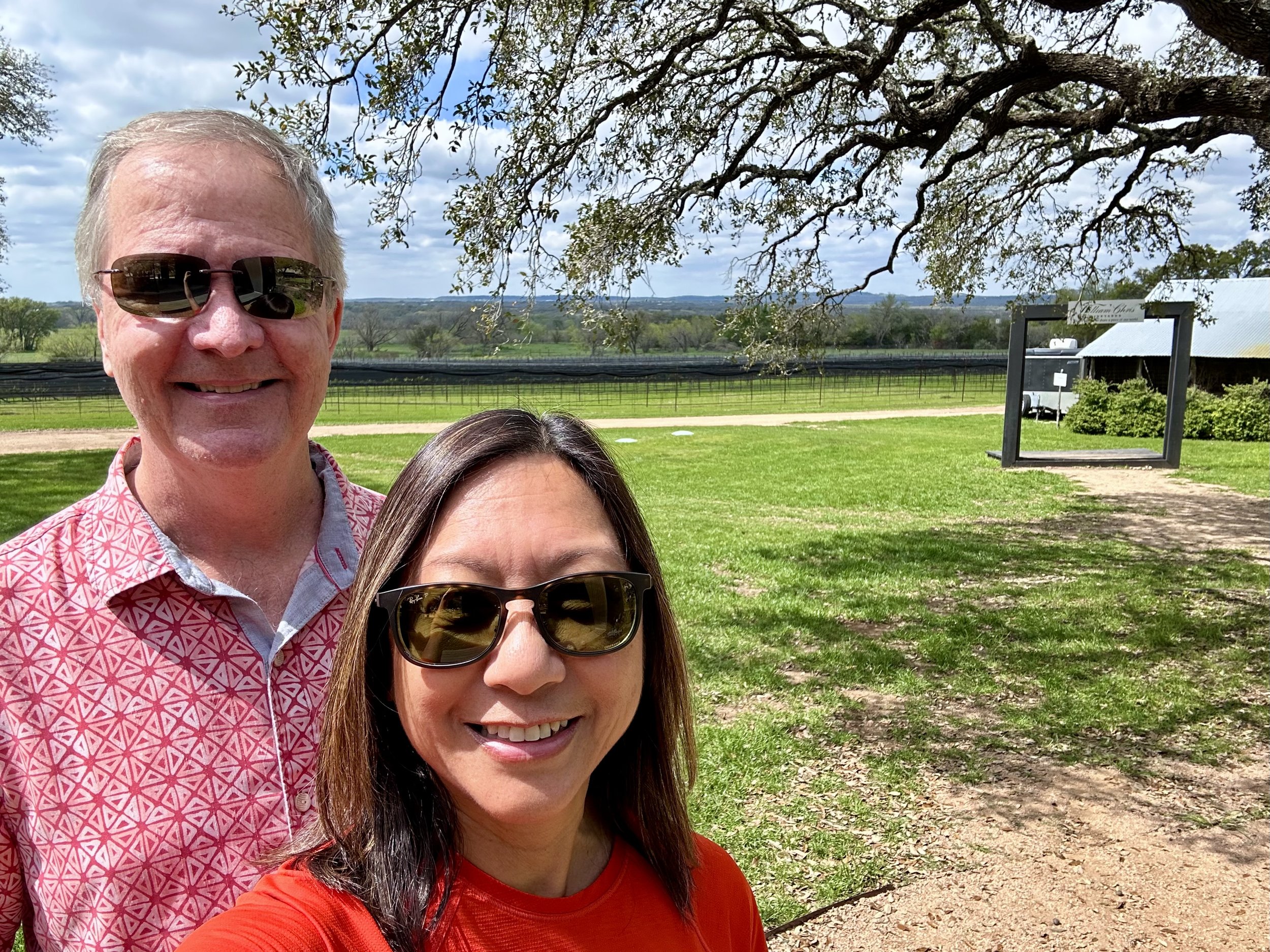
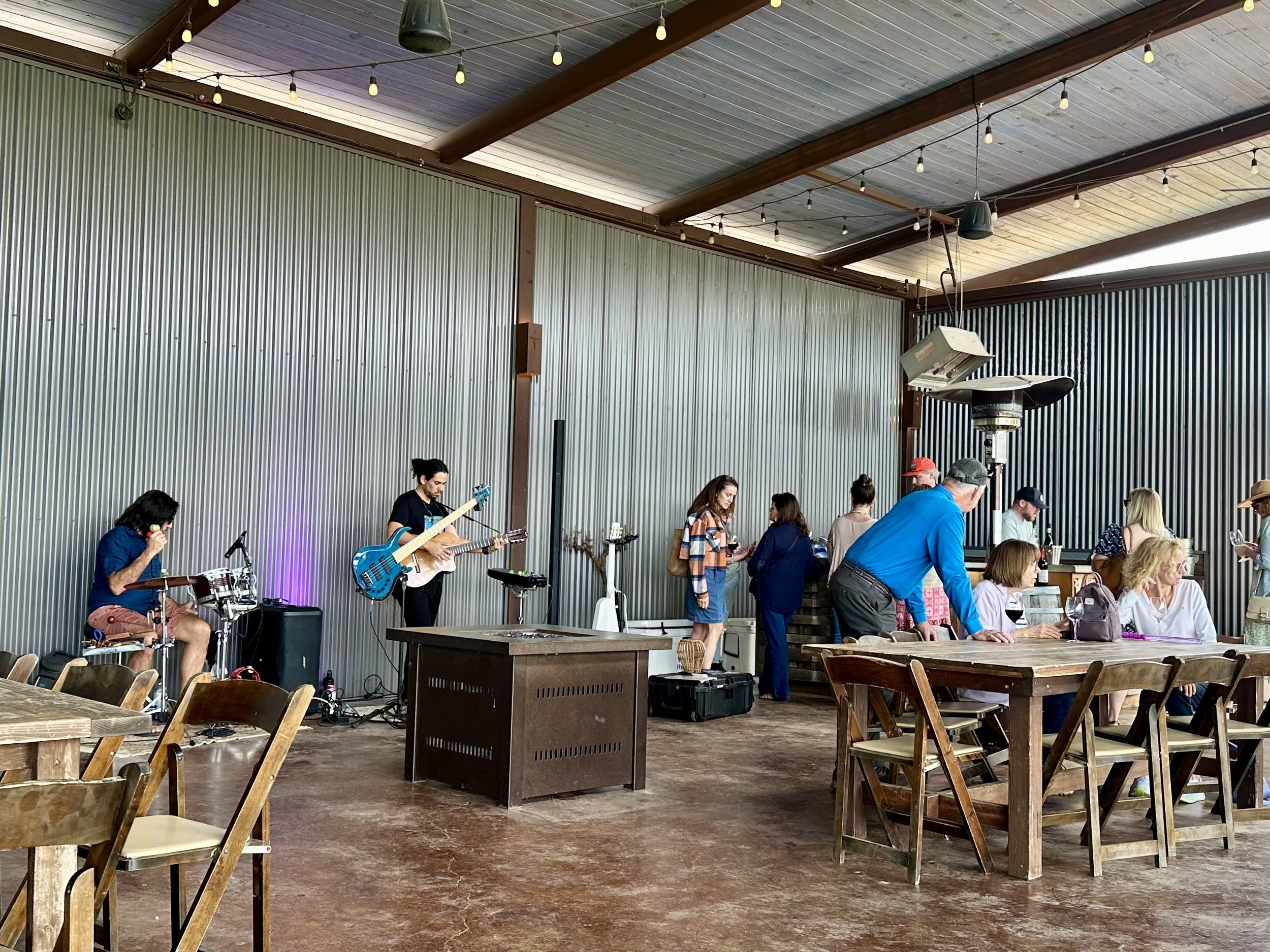
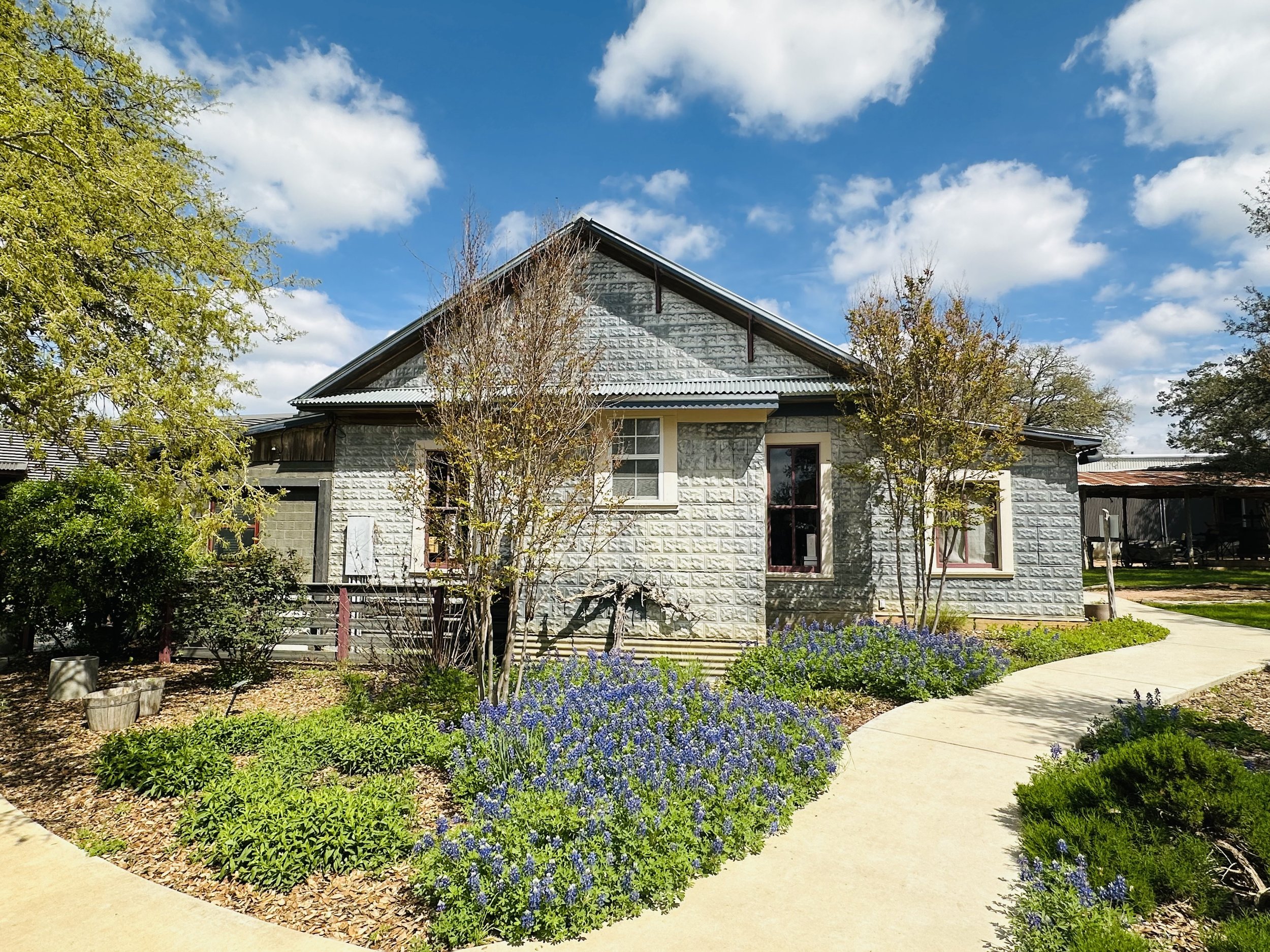
LBJ Ranch is quite large, so we did a self-guided driving tour. There was a one-room schoolhouse, a family cemetery, a small herd of Hereford cattle, and a guest house that was a rebuilt version of the house LBJ was born in. The fields here were carpeted with yellow flowers instead of bluebonnets. Back at the Visitor Center, we had seen videos and photos showing cabinet members and world leaders relaxing at the ranch house with LBJ. The “Texas White House” was closed for repairs, so we had to settle for glimpsing it through the trees.
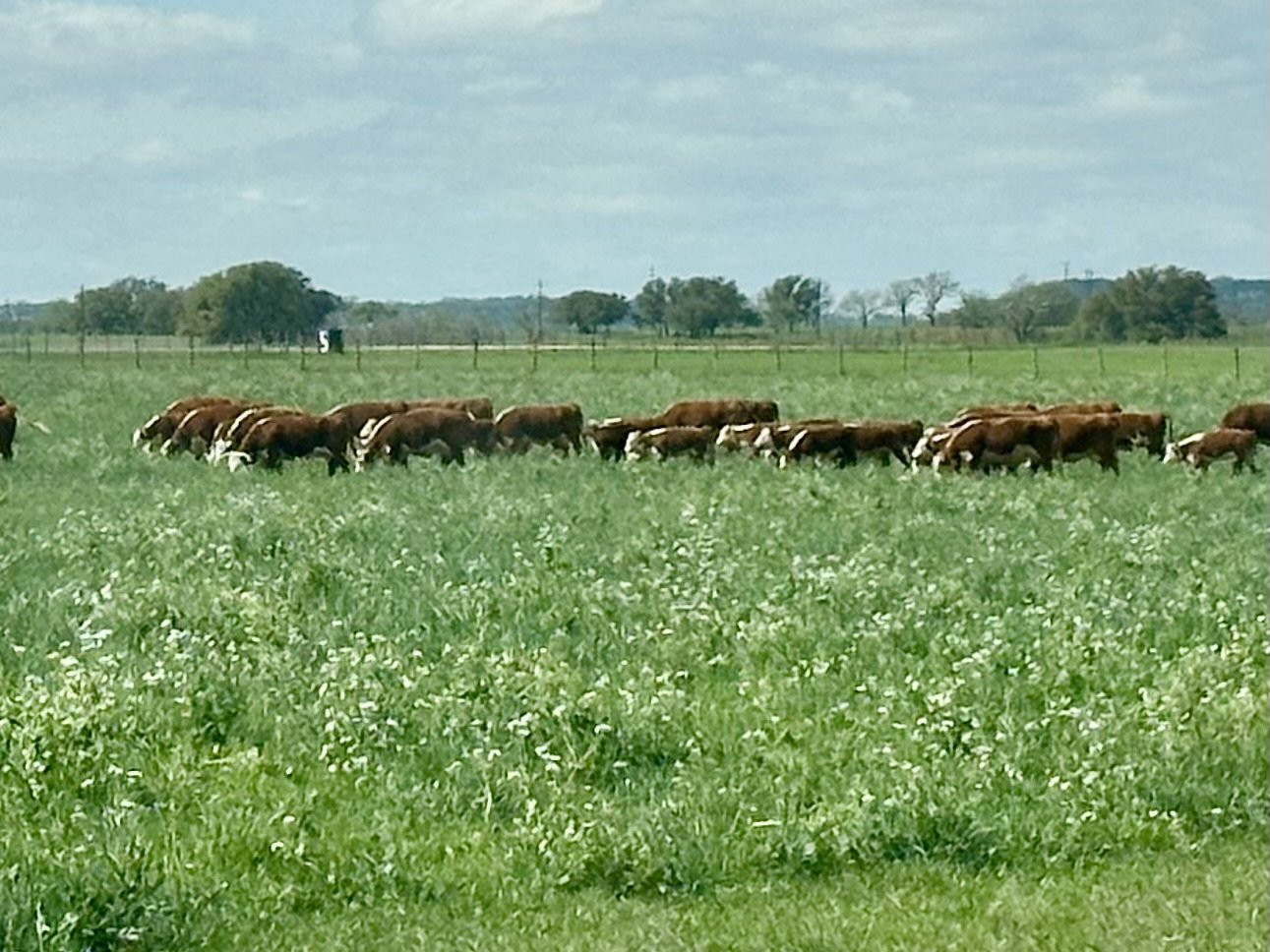
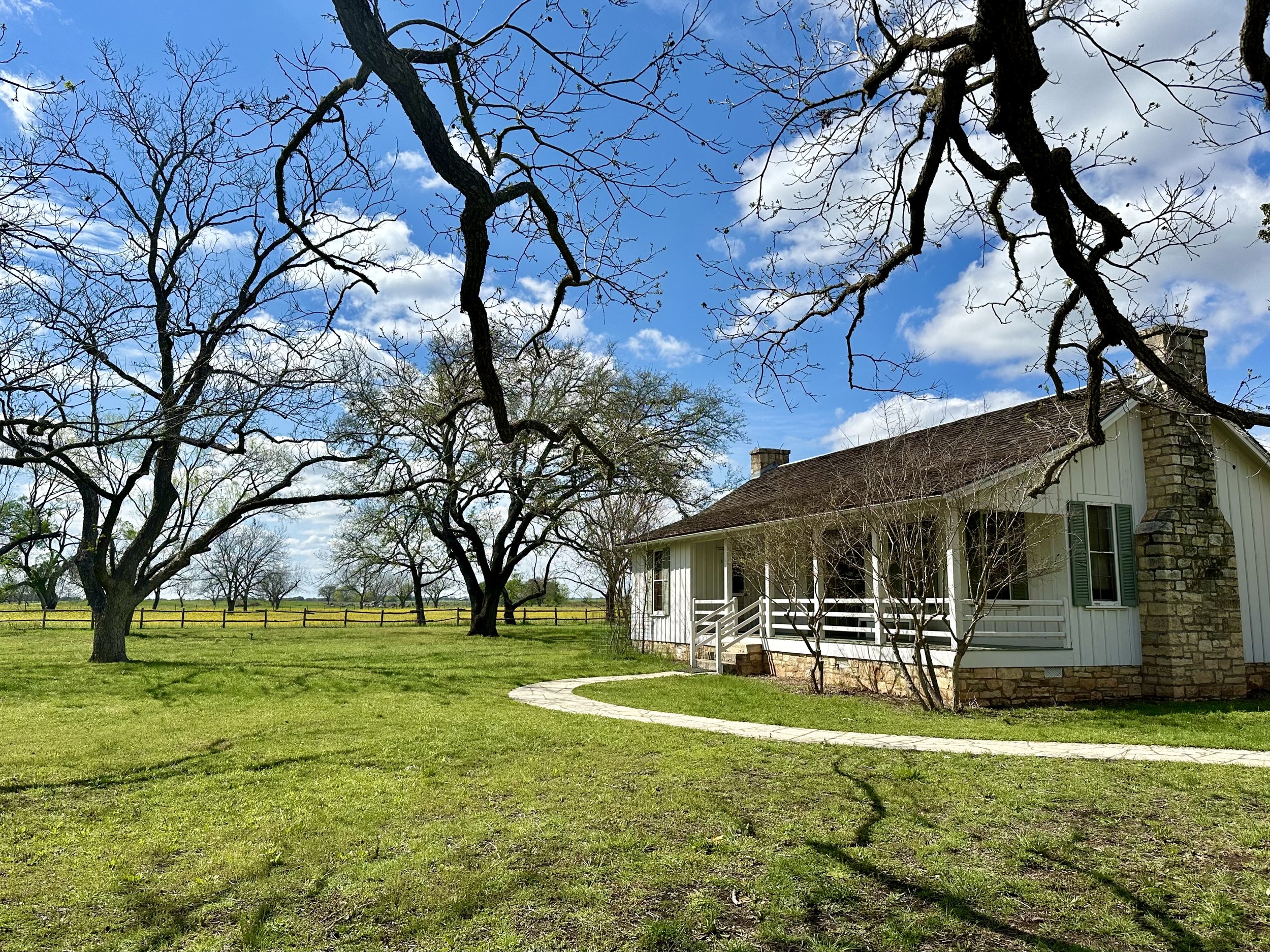
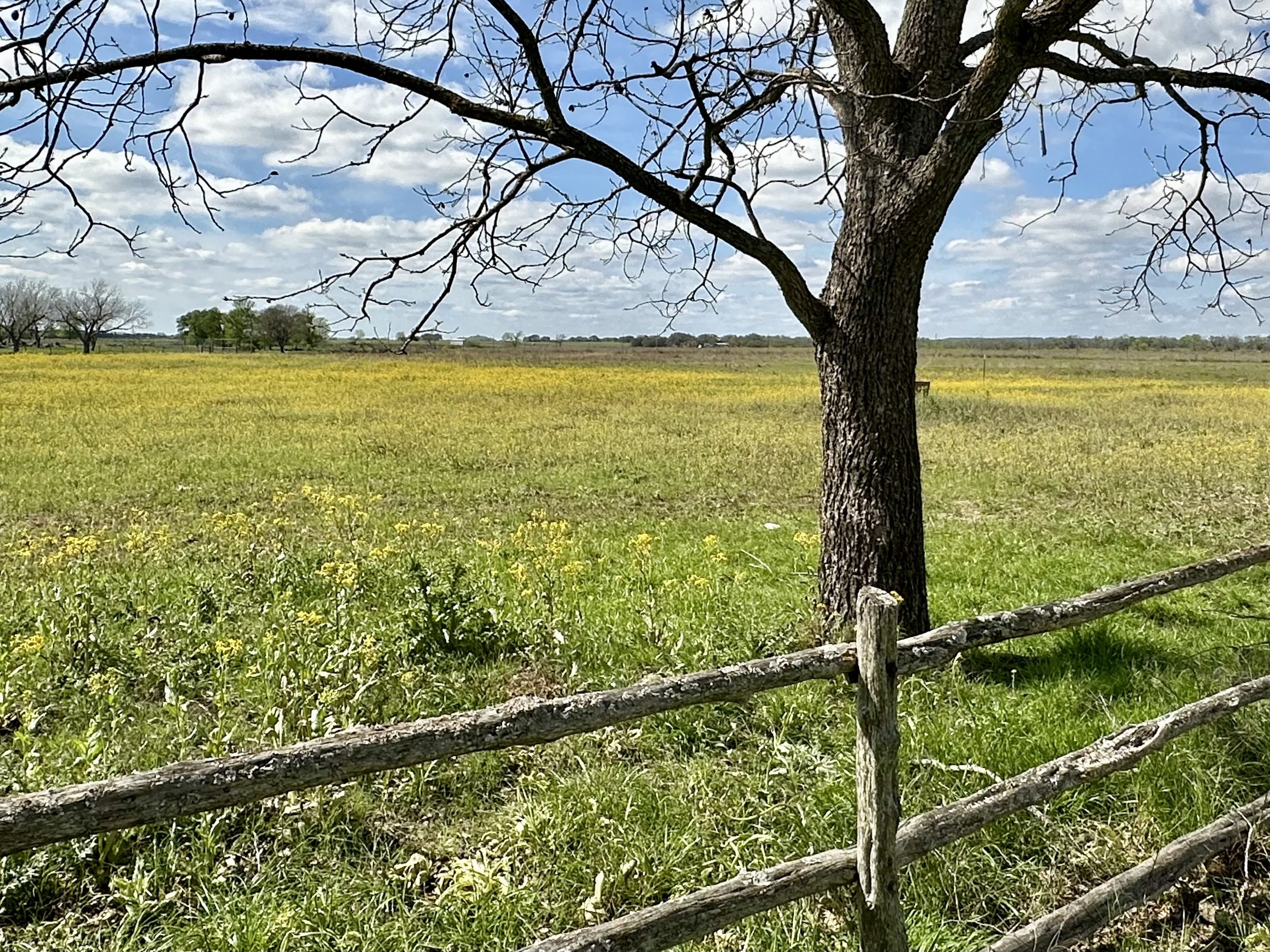
The park exists because Lyndon and Lady Bird Johnson deeded their ranch to the National Park Service in 1972. LBJ died soon afterward, and Lady Bird continued to lived in the Texas White House until her death in 2007.
With such a rural upbringing and a family history of living off the land, it made sense that LBJ developed the “can do” attitude needed to lead a country rocked by John F. Kennedy’s assassination. The beautiful spring weather and green fields carpeted in wildflowers made it easy to see how time at the ranch would be a great antidote for the high-pressure job of POTUS.